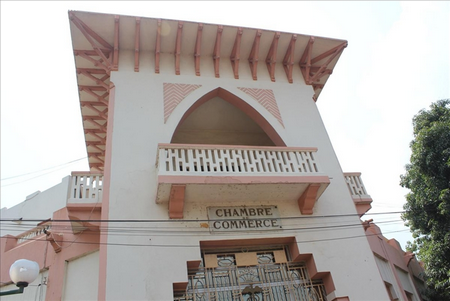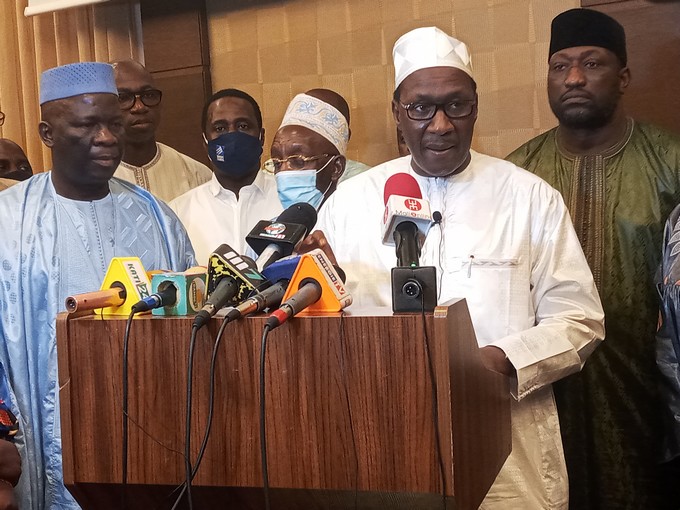La salle de conférence de la Chambre de commerce et d’industrie du Mali (Ccim) a abrité, le mercredi 20 juin, la rencontre entre l’Administration publique et le Secteur privé sur le thème : « Les procédures d’importation et d’exportation au Mali et les obstacles y afférents ». La cérémonie d’ouverture était présidée par le vice-président de la Ccim, Issa Yattasaye. Pour la circonstance, il était entouré du représentant de la Direction générale du Commerce, de la concurrence et de la consommation et celui de la Direction générale des Douanes du Mali, Seydou Kayantao.
Le vice-président de la Ccim, dans son discours d’ouverture, dira que cette rencontre vise à rapprocher des partenaires de tous les jours dans un cadre d’échanges directs, francs et sincères en vue de lever les obstacles susceptibles de rendre difficile ce partenariat. C’est ainsi que, dit-il, pour cette première rencontre, la Chambre de commerce et d’industrie du Mali, à la demande des acteurs du secteur, a décidé de choisir comme thème : « Les procédures d’importation et d’exportation au Mali et les obstacles y afférents ».
«
Pour qui connait l’importance de l’import-export pour le Mali, un pays de l’hinterland, la pertinence de ce thème n’est point à démontrer. C’est donc une série de rencontres thématiques que nous allons organiser, dans les prochains mois, avec la direction générale des Impôts, le Fonds d’appui à la formation professionnelle et à l’apprentissage (Fafpa), l’Association professionnelle des banques et établissements financiers, le Fonds de garantie du secteur privé, la Bceao… », a-t-il laissé entendre.
À sa suite, le représentant de la Direction générale du Commerce, de la consommation et de la concurrence a précisé qu’au Mali, toute opération d’importation ou d’exportation s’effectue sous le couvert d’une intention d’importation ou d’exportation délivrée par les services de la Direction générale du Commerce, de la consommation et de la concurrence (Dgcc).
Selon lui, ces intentions sont nominatives et incessibles. «
L’intention d’importation ou d’exportation est établie par les services du commerce sur la base d’une facture comportant les spécifications de la nomenclature tarifaire et statistique douanière correspondant aux différents produits y figurant », a-t-il ajouté. À le croire, l’intention d’importation a une durée de 12 mois, elle peut être annulée et remplacée par une nouvelle ou prorogée de six mois supplémentaires à la demande de l’importateur.
Par rapport à l’habilitation, l’orateur dira que sont habilités à effectuer une opération d’importation toutes les personnes physiques et morales immatriculées au Registre du commerce et crédit mobilier en qualité d’importateur et détentrices d’une patente Import-Export ou tout autre document tenant lieu en cours de validité. Aussi, les départements ministériels, les directions centrales et assimilées, les collectivités décentralisées, les établissements publics à caractère administratif pour leurs besoins de fonctionnement, les entreprises autorisées par une convention avec l’État, les entreprises adjudicataires de marché suite à un appel d’offres international pour les produits nécessaires à l’exécution de leur marché sont également habilitées à lever l’intention d’importation.
Pour sa part, le représentant de la Direction générale des Douanes du Mali a fait un bref aperçu sur le cadre juridique et réglementaire de la politique fiscale et économique en matière de commerce international. Selon lui, cette politique, assise sur une réglementation bien élaborée, visait la mobilisation des recettes budgétaires, la prévention de la fraude et de la protection des industries naissantes.
À ses dires, les réformes induites par les intégrations économiques ont sérieusement modifié le paysage fiscal de notre pays. Et de poursuivre que leur mise en œuvre a eu comme conséquences le dépérissement voire la disparition de la fiscalité de porte, notamment dans le commerce des produits originaires. «
La douane est aujourd’hui un véritable partenaire des entreprises pour des conseils d’orientation et de gestion des échanges (import-export). Malgré la modernisation de l’économie, les missions traditionnelles de l’administration des douanes restent toujours d’ordre fiscal et économique auxquelles s’ajoutent des missions particulières, entre autres, la protection de l’environnement, la préservation de la santé et de la moralité publiques ainsi que la lutte contre les criminalités transfrontalières », a-t-il conclu.
Boubacar PAÏTAO

 Like
0
Like
0
 Je kiff pas
0
Je kiff pas
0
 Je kiff
0
Je kiff
0
 Drôle
0
Drôle
0
 Hmmm
0
Hmmm
0
 Triste
0
Triste
0
 Ouah
0
Ouah
0


















































